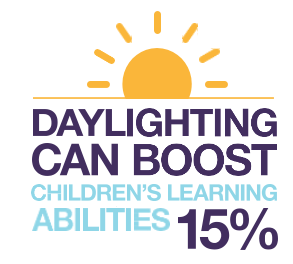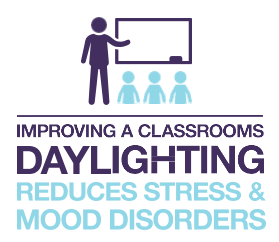Recent research conducted by Professor Peter Barrett and his team of school design experts at the University of Salford, UK, showed clear evidence that well-designed primary schools can substantially boost children’s academic performance in reading, writing, and math.
Find out more: Building Better Schools – 6 Ways to Help Our Children Learn
Classroom lighting plays a particularly critical role in studies. Appropriate lighting improves test scores, reduces off-task behavior and plays a significant role in students’ achievement. A study by Alberta Education, titled “A Study into the Effects of Light on Children of Elementary School Age,” has proven that students with the most classroom daylight progressed faster in one year on math tests and reading tests than those students who learned in environments that received the least amount of natural light.
More Details: Acoustics and Daylighting
Having enough light in the classroom to read and study does not guarantee that there is sufficient light to stimulate our biological clocks. Most schools typically do not provide adequate electric light or daylight to fully stimulate the circadian system. However, if designers provide sufficient daylight, which contains ample, short-wave- length (blue) light in classrooms, school buildings will be able to provide more circadian stimulation and therefore, better support for circadian entrainment.
Find out more: Patterns to Daylight Schools for People and Sustainability
It was found that the students with the most daylight in their classrooms progressed 20% faster on math tests and 26% faster on reading tests in one year than those with the least.
More Details: Classrooms Optimized with Natural Daylight Increase Student Performance



